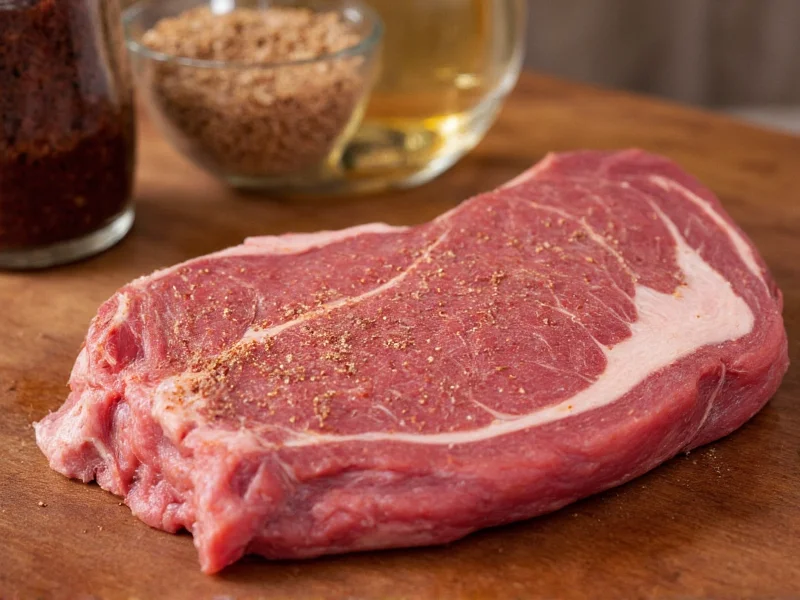Understanding the proper sequence for preparing beef with Cajun seasoning is crucial for both food safety and culinary success. Many home cooks mistakenly believe they should clean meat after seasoning, but this approach undermines the entire cooking process. Let's clarify the correct procedure for handling beef when Cajun seasoning is involved.
Why You Should Never Clean Seasoned Beef
Cajun seasoning adheres to meat through a combination of moisture and oil absorption. When you apply seasoning to beef, it begins interacting with the meat's surface immediately. Attempting to clean beef after seasoning creates several problems:
- Removes the flavorful spice coating you carefully applied
- Creates excess moisture that prevents proper searing
- Increases risk of cross-contamination from handling wet, seasoned meat
- Wastes quality spices that are designed to cook into the meat
Correct Beef Preparation Sequence for Cajun Dishes
The proper workflow for preparing beef with Cajun seasoning follows these essential steps:
- Clean first: Rinse beef under cool water only if absolutely necessary (many chefs skip this step)
- Dry thoroughly: Pat beef completely dry with paper towels - this is the critical step many miss
- Season appropriately: Apply Cajun seasoning evenly just before cooking
- Cook immediately: Get seasoned beef into proper heat to lock in flavors
| Preparation Stage | Correct Action | Common Mistake |
|---|---|---|
| Cleaning | Pat dry with paper towels (no rinsing needed) | Rinsing under water creating excess moisture |
| Seasoning | Apply dry spices to dry surface immediately before cooking | Seasoning hours in advance or on wet meat |
| Cooking | High heat sear to lock in seasoning | Low temperature cooking causing spice rub to fall off |
What to Do If You've Already Seasoned Beef and Need to Remove It
While not recommended, there are rare circumstances where you might need to remove Cajun seasoning from beef. This could happen if:
- You used too much seasoning
- You accidentally seasoned meat intended for someone with dietary restrictions
- You realized you used the wrong spice blend
To carefully remove Cajun seasoning from beef:
- Gently scrape off excess dry seasoning with a clean spoon
- Use a slightly damp paper towel to dab (not rub) the surface
- Re-pat completely dry with fresh paper towels
- Refrigerate immediately if not cooking right away
This process will remove some surface seasoning but cannot eliminate all spice penetration. The meat's flavor profile will be altered, and food safety becomes more critical since you've handled the meat multiple times.
Best Practices for Beef Preparation with Cajun Seasoning
Professional chefs follow these guidelines when preparing beef dishes with Cajun seasoning:
- Dry surface is essential: Moisture is the enemy of proper searing and spice adhesion
- Seasoning timing matters: Apply dry rubs 15-30 minutes before cooking for optimal results
- Oil helps: A light coating of neutral oil before seasoning improves adhesion
- Salt separately: Many chefs apply salt earlier than other spices for better penetration
- Don't over-season: A thin, even layer works better than thick clumps of seasoning
Common Misconceptions About Cleaning Meat
Many home cooks operate under incorrect assumptions about meat preparation:
- "Rinsing removes bacteria" - Actually, water splashes can spread bacteria further
- "Seasoning protects the meat" - Spices don't have preservative qualities for raw meat
- "More seasoning is better" - Excessive spice creates bitter, overwhelming flavors
- "You must clean all meat" - Properly handled meat from reputable sources needs only drying
The USDA actually recommends against washing raw meat, as it increases cross-contamination risk without improving safety. The high heat of proper cooking destroys harmful bacteria more effectively than washing ever could.
When Special Cleaning Might Be Necessary
While standard practice doesn't require washing beef, there are limited scenarios where additional cleaning might be appropriate:
- Visibly dirty meat from non-commercial sources
- Meat with excessive marinade from storage
- Certain cultural preparation methods requiring specific cleaning
- When repurposing cooked meat for a new dish with different seasoning
Even in these cases, avoid soaking or vigorous washing. Instead, use the dab-and-dry method with minimal moisture contact.
Proper Storage of Seasoned Beef
If you've seasoned beef but aren't ready to cook immediately:
- Refrigerate within 30 minutes of seasoning
- Store on a plate or tray to catch any drips
- Use within 24 hours for best quality
- Never freeze seasoned meat without proper wrapping
Extended storage of seasoned beef can cause certain spices (particularly acidic components) to begin breaking down the meat's surface, affecting both texture and flavor.











 浙公网安备
33010002000092号
浙公网安备
33010002000092号 浙B2-20120091-4
浙B2-20120091-4